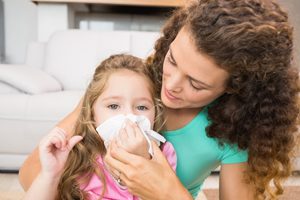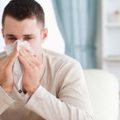
There's still a chill in the air, but when the sun fights through the clouds and shines in all its glory it becomes undeniable: spring is here. The season brings warmth, new life and, of course, a hellish amount of allergens.
About 50 million Americans suffer from seasonal allergies, also known as hay fever, with symptoms ranging from sneezing and a stuffy or runny nose to itchy eyes, nose and throat.
"Even with snow still on the ground, trees have started budding and are the first to produce pollen, creating major problems for people with allergies," said Dr. David Rosenstreich, chief of the division of allergy and immunology at Montefiore Medical Center in New York City. "The symptoms people experience often resemble a common cold, but, if it happens every year at this time, it's most likely to be allergies."
Ignoring allergy symptoms can lead to the development of a chronic illness. According to the CDC, allergies are the 6th leading cause of chronic illness in the U.S., with an annual health cost in excess of $18 billion. Doctors say that no one should try to suffer through allergies. The sooner symptoms are addressed through strategic allergy control methods, the more effective treatment is and the less likely individuals are to develop severe chronic problems.
Aside from visiting your doctor to address allergies and taking over-the-counter or prescription medications, there are a few other steps people can take to alleviate tough allergy symptoms. Staying indoors on days with high pollen counts, something the weather forecast on your local news should tell you, and using air conditioners to filter air inside your home are two ways to reduce the impact of allergy season.









